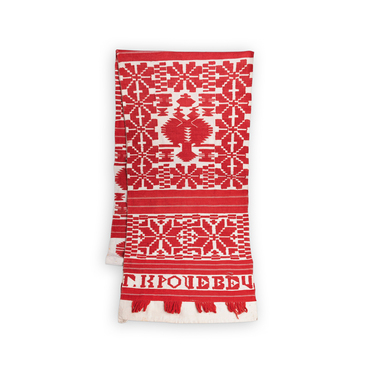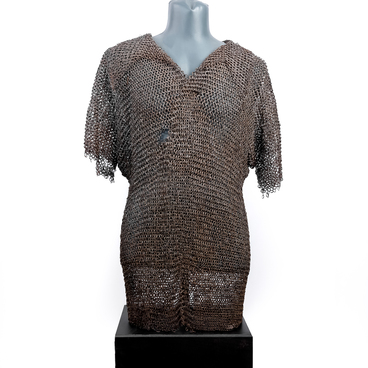Birch bark craftsmanship played an important role in the artworks created by women among the indigenous peoples of Primorsky Krai. It was used to make dishes, boxes, bags, masks, hats, toys, as well as decorations for cradles and boats. Birch bark is easily removed from the trunk, processed with the simplest tools. It is lightweight, durable, and waterproof. Birch bark was also used in construction as a damp-resistant building material.
The exhibition of the Vladimir Arseniev Museum of Far East History features a salt box made of a bent birch bark ring. The birch bark was carefully heated over the fire so that it became softened and flexible. The edges of the box are connected with neat stitches. Sinews and nettle threads, as well as roots of spruce or willow trees were used to sew birch bark containers and boxes. Nettle threads were very strong and were often used for household needs.
The Udege stitch is not only a technique, it also produces an effect of cord embroidery. The piece is decorated with a geometric pattern. Various techniques such as carving, embossing and stamping, appliqué, and coloring were used in applying the pattern to birch bark. Sometimes combinations of carving with painting or embossing with painting were used. The decoration of the birch-bark box presented at the exhibition is made with thin impressed lines.
In their art, Udege craftswomen widely used decorative patterns (oh-neh). All known motifs on birch-bark products are divided into four groups: geometric, plant, zoomorphic, anthropomorphic. The modern image of the Udege pattern differs from the ancient one. Nowadays, the ancient symbolism has been forgotten, and the pattern is perceived as merely decorative even by elderly craftsmen.
The Udege geometric
ornamentation includes stripes, meander, spirals, curly brackets, squares,
rhombuses, circles and semicircles, as well as cross-shaped figures.
Curvilinear patterns prevail in the pattern. Spirals, curly brackets and
curvilinear patterns decorate the piece from the museum’s collection. It has a
complex, delicate, and exquisite pattern. The fanciful patterned lace stylized
beyond recognition the forms of the surrounding nature.


